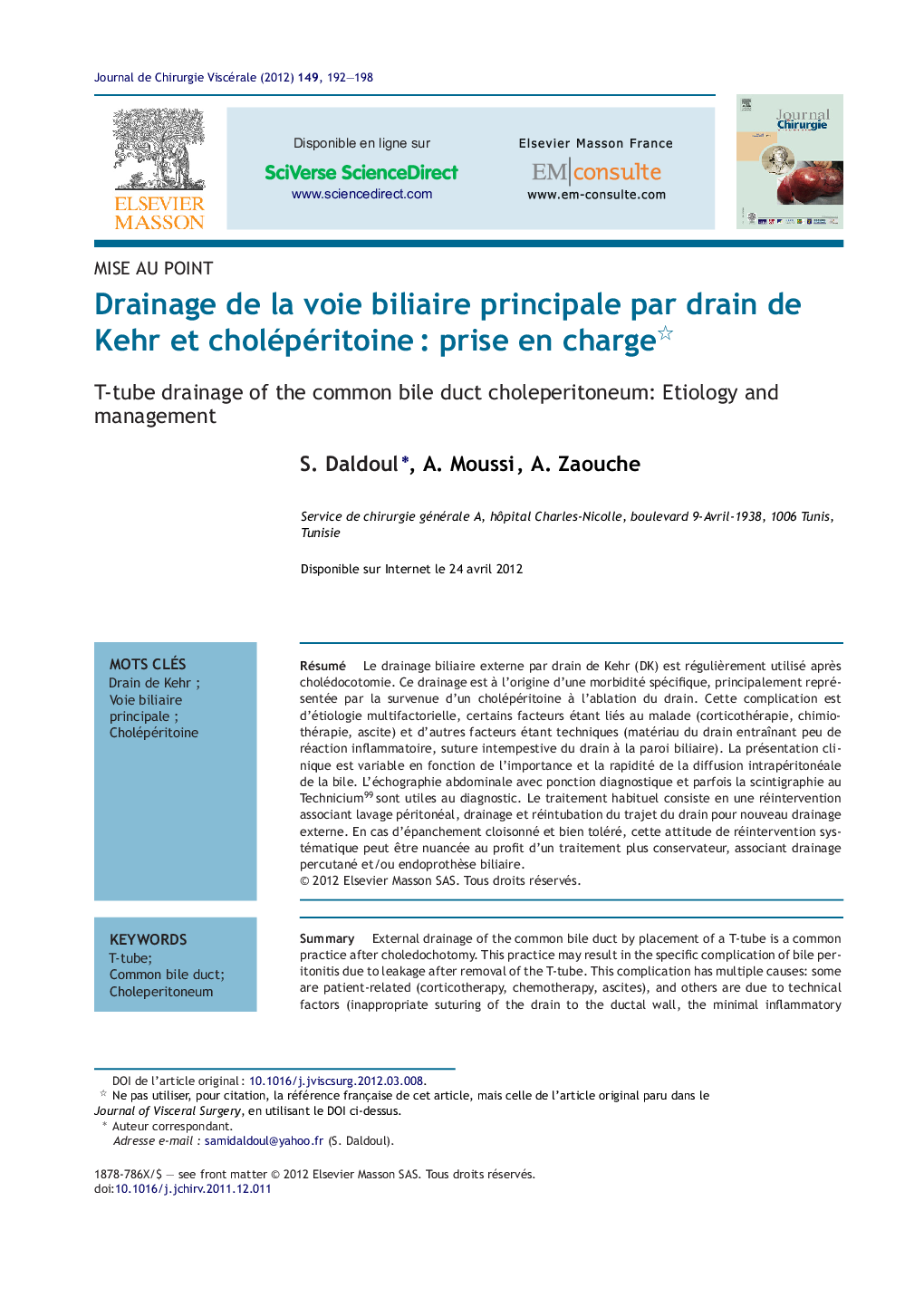| Article ID | Journal | Published Year | Pages | File Type |
|---|---|---|---|---|
| 3312109 | Journal de Chirurgie Viscérale | 2012 | 7 Pages |
Abstract
External drainage of the common bile duct by placement of a T-tube is a common practice after choledochotomy. This practice may result in the specific complication of bile peritonitis due to leakage after removal of the T-tube. This complication has multiple causes: some are patient-related (corticotherapy, chemotherapy, ascites), and others are due to technical factors (inappropriate suturing of the drain to the ductal wall, the minimal inflammatory reaction related to some drain materials). The clinical presentation is quite variable depending on the amount and rapidity of intraperitoneal spread of of bile leakage. Abdominal ultrasound (US), with US-guided needle aspiration and occasionally Technetium99Â scintigraphy are useful for diagnosis. Traditional therapy consists of surgical intervention including peritoneal lavage and re-intubation of the choledochal fistulous tract to allow for a further period of external drainage. When leakage is walled off and well-tolerated, a more nuanced and less invasive conservative therapy may combine percutaneous drainage with endoscopic placement of a transampullary biliary drainage.
Related Topics
Health Sciences
Medicine and Dentistry
Gastroenterology
Authors
S. Daldoul, A. Moussi, A. Zaouche,
